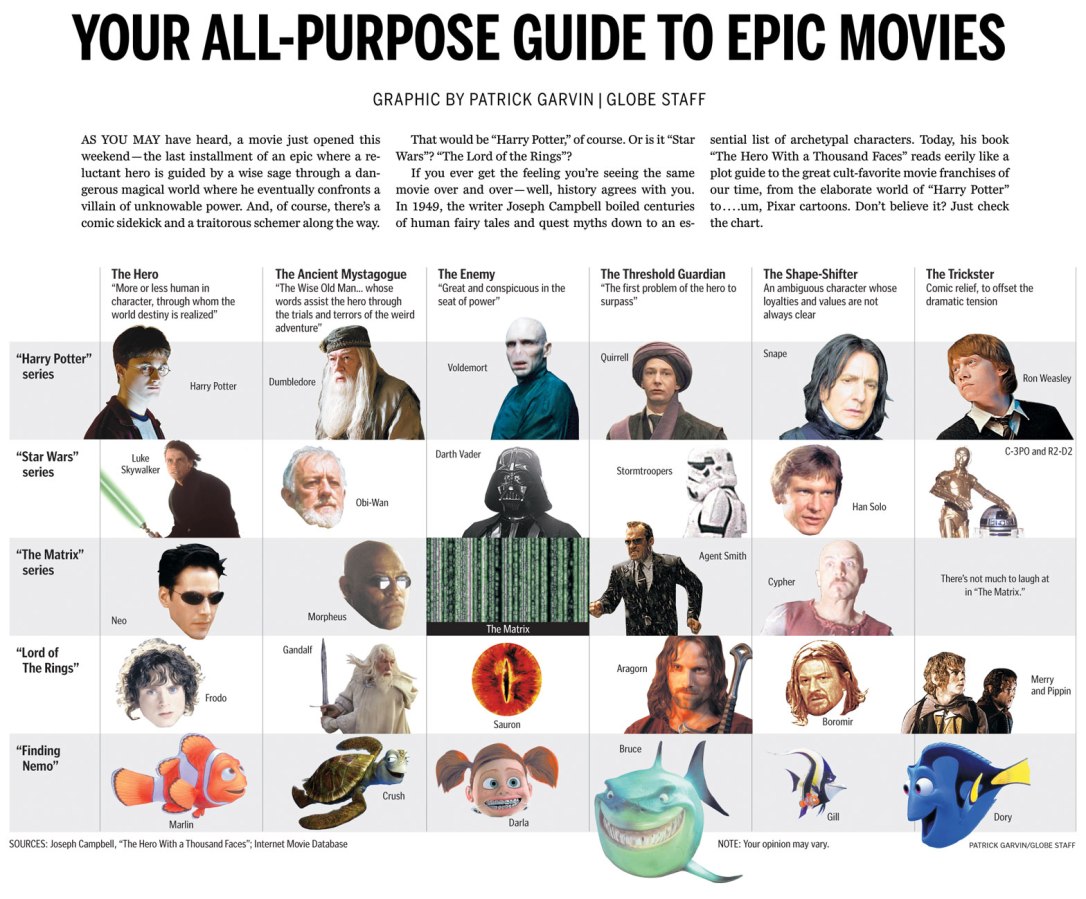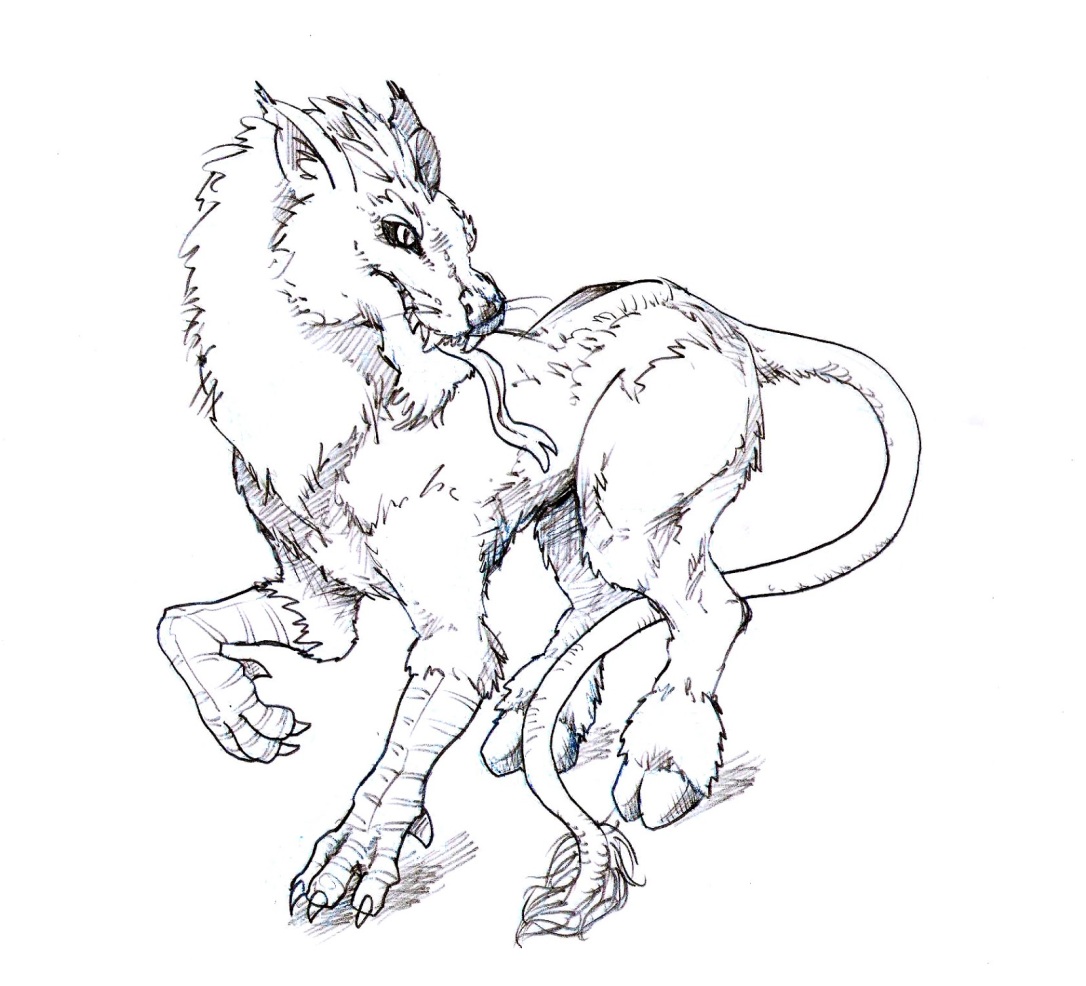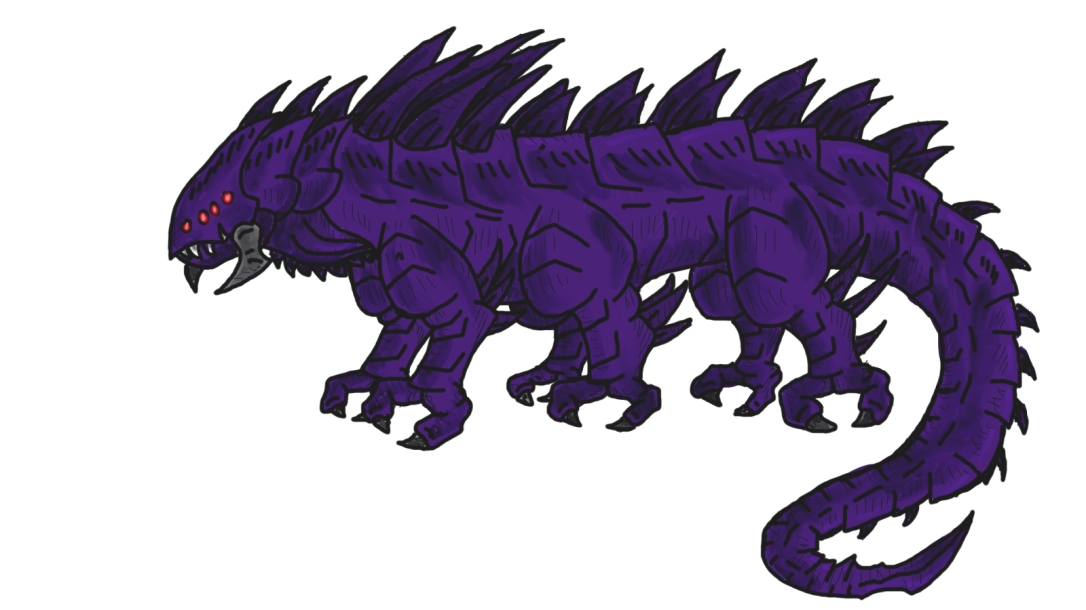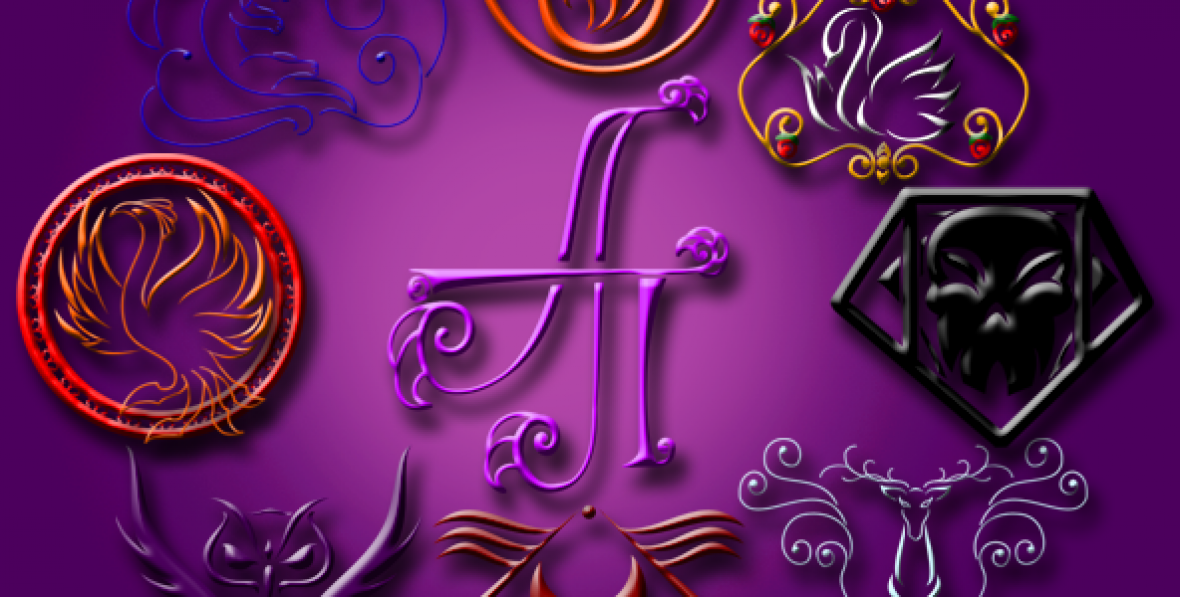NOTE: I created this post to the best of my knowledge on this subject and have provided some personal opinions. In no way am I an expert on this subject and am learning still. Please keep this in mind while reading, thank you.
I’m pretty sure it is easy to say who is evil and who is good but why are they evil and good? Is it because you say the villain of your story is evil? Is it because the heroes of your story say they are evil? What makes the hero of your story good? George R.R. Martin, author of the A Song of Ice and Fire books, made a great point in one of his interviews, although we saw the villains of our history as villains, they truly saw themselves as heroes for their nation. Kim Jong On really sees himself as his countries protector, protecting his people from the evil Americans that are cannibalistic, tortures, etc. In your story what makes each of your characters themselves and unique from others?
History is written by the victors. – Winston Churchill
As terrifying as some people find this quote, I find it very interesting. It means that there is something more to our history that was or may be hidden still. Are you willing to write something intriguing and mind blowing in your story?
This slideshow requires JavaScript.
Before writing your story you need to establish your characters. There are at least 12 Character Archetypes. Now you may be wondering, what is a character archetype?
Character Archetype – In literature, an archetype is a typical character, an action or a situation that seems to represent such universal patterns of human nature. An archetype, also known as universal symbol, may be a character, a theme, a symbol or even a setting.
Archetypes:
The Ego Type: The Innocent, The Orphan, The Hero, and The Caregiver
The Soul Type: The Explorer, The Rebel, The Lover, and The Creator
The Self Type: The Jester, The Sage, The Magician, and The Ruler
The Innocent – Motto: Free to be you and me
Core desire: to get to paradise
Goal: to be happy
Greatest fear: to be punished for doing something bad or wrong
Strategy: to do things right
Weakness: boring for all their naive innocence
Talent: faith and optimism
The Innocent is also known as: Utopian, traditionalist, naive, mystic, saint, romantic, dreamer.
The Orphan – Motto: All men and women are created equal
Core Desire: connecting with others
Goal: to belong
Greatest fear: to be left out or to stand out from the crowd
Strategy: develop ordinary solid virtues, be down to earth, the common touch
Weakness: losing one’s own self in an effort to blend in or for the sake of superficial relationships
Talent: realism, empathy, lack of pretense
The Regular Person is also known as: The good old boy, every man, the person next door, the realist, the working stiff, the solid citizen, the good neighbor, the silent majority.
The Hero – Motto: Where there’s a will, there’s a way
Core desire: to prove one’s worth through courageous acts
Goal: expert mastery in a way that improves the world
Greatest fear: weakness, vulnerability, being a “chicken”
Strategy: to be as strong and competent as possible
Weakness: arrogance, always needing another battle to fight
Talent: competence and courage
The Hero is also known as: The warrior, crusader, rescuer, superhero, the soldier, dragon slayer, the winner and the team player.
The Caregiver – Motto: Love your neighbor as yourself
Core desire: to protect and care for others
Goal: to help others
Greatest fear: selfishness and ingratitude
Strategy: doing things for others
Weakness: martyrdom and being exploited
Talent: compassion, generosity
The Caregiver is also known as: The saint, altruist, parent, helper, supporter.
The Explorer – Motto: Don’t fence me in
Core desire: the freedom to find out who you are through exploring the world
Goal: to experience a better, more authentic, more fulfilling life
Biggest fear: getting trapped, conformity, and inner emptiness
Strategy: journey, seeking out and experiencing new things, escape from boredom
Weakness: aimless wandering, becoming a misfit
Talent: autonomy, ambition, being true to one’s soul
The explorer is also known as: The seeker, iconoclast, wanderer, individualist, pilgrim.
The Rebel – Motto: Rules are made to be broken
Core desire: revenge or revolution
Goal: to overturn what isn’t working
Greatest fear: to be powerless or ineffectual
Strategy: disrupt, destroy, or shock
Weakness: crossing over to the dark side, crime
Talent: outrageous, radical freedom
The Outlaw is also known as: The rebel, revolutionary, wild man, the misfit, or iconoclast.
The Lover – Motto: You’re the only one
Core desire: intimacy and experience
Goal: being in a relationship with the people, work and surroundings they love
Greatest fear: being alone, a wallflower, unwanted, unloved
Strategy: to become more and more physically and emotionally attractive
Weakness: outward-directed desire to please others at risk of losing own identity
Talent: passion, gratitude, appreciation, and commitment
The Lover is also known as: The partner, friend, intimate, enthusiast, sensualist, spouse, team-builder.
The Creator – Motto: If you can imagine it, it can be done
Core desire: to create things of enduring value
Goal: to realize a vision
Greatest fear: mediocre vision or execution
Strategy: develop artistic control and skill
Task: to create culture, express own vision
Weakness: perfectionism, bad solutions
Talent: creativity and imagination
The Creator is also known as: The artist, inventor, innovator, musician, writer or dreamer.
The Jester – Motto: You only live once
Core desire: to live in the moment with full enjoyment
Goal: to have a great time and lighten up the world
Greatest fear: being bored or boring others
Strategy: play, make jokes, be funny
Weakness: frivolity, wasting time
Talent: joy
The Jester is also known as: The fool, trickster, joker, practical joker or comedian.
The Sage – Motto: The truth will set you free
Core desire: to find the truth.
Goal: to use intelligence and analysis to understand the world.
Biggest fear: being duped, misled—or ignorance.
Strategy: seeking out information and knowledge; self-reflection and understanding thought processes.
Weakness: can study details forever and never act.
Talent: wisdom, intelligence.
The Sage is also known as: The expert, scholar, detective, advisor, thinker, philosopher, academic, researcher, thinker, planner, professional, mentor, teacher, contemplative.
The Magician – Motto: I make things happen.
Core desire: understanding the fundamental laws of the universe
Goal: to make dreams come true
Greatest fear: unintended negative consequences
Strategy: develop a vision and live by it
Weakness: becoming manipulative
Talent: finding win-win solutions
The Magician is also known as: The visionary, catalyst, inventor, charismatic leader, shaman, healer, medicine man.
The Ruler – Motto: Power isn’t everything, it’s the only thing.
Core desire: control
Goal: create a prosperous, successful family or community
Strategy: exercise power
Greatest fear: chaos, being overthrown
Weakness: being authoritarian, unable to delegate
Talent: responsibility, leadership
The Ruler is also known as: The boss, leader, aristocrat, king, queen, politician, role model, manager or administrator.

There is also the basic of Character Archetypes:

The Hero – The hero is always the protagonist (though the protagonist is not always a hero). Traditionally speaking, the hero has been male, though fortunately there are more female heroes appearing in contemporary literature. The hero is after some ultimate objective and must encounter and overcome obstacles along the way to achieving this goal. He or she is usually morally good, though that goodness will likely be challenged throughout the story. Heroes’ ability to stay true to themselves despite the trials they must face is what makes them heroic. That and the fact that they are often responsible for saving a bunch of people.
The Mentor – The mentor is a common archetype in literature. The mentor is usually old, and this person often has some kind of magical abilities or a much greater breath of knowledge than others possess. Mentors help heroes along their journeys, usually by teaching them how to help themselves (though mentors sometimes directly intervene in extreme situations). The mentor often ends up dying but is sometimes resurrected or revisited even after death.
The Every Man or Woman – The every man character archetype often acts as the stand-in for the audience. This character archetype is just a normal person, but for some reason, he or she must face extraordinary circumstances. The every man can be the protagonist or a supporting figure. Unlike the hero, the every man does not feel a moral obligation to his or her task; instead, these characters often find themselves in the middle of something they have barely any control over. Unlike the hero, the every man archetype isn’t trying to make a great change or work for the common good: these characters are just trying to get through a difficult situation.
The Innocent – Characters representing the innocent archetype are often women or children. These character archetypes are pure in every way. Though often surrounded by dark circumstances, the innocent archetype somehow has not become jaded by the corruption and evil of others. These character archetypes aren’t stupid: they’re just so morally good that the badness of others cannot seem to mar them.
The Villain – The villain wants to stop the hero archetype from achieving his or her goal. The villain is often evil, though there is often a reason—however warped that reason may be—why villains are so bad. Villains often want nothing more than to control and have power over everyone and everything around them, probably because most of them are secretly strongly motivated by fear. Villains are often the moral foil of the hero: that is, their main vice will parallel the hero’s main virtue.
Other basic archetypes include :
The Ally – The hero will have some great challenges ahead; too great for one person to face them alone. They’ll need someone to distract the guards, hack into the mainframe, or carry their gear. Plus, the journey could get a little dull without another character to interact with.
The Herald – The herald appears near the beginning to announce the need for change in the hero’s life. They are the catalyst that sets the whole adventure in motion. While they often bring news of a threat in a distant land, they can also simply show a dissatisfied hero a tempting glimpse of a new life. Occasionally they single the hero out, picking them for a journey they wouldn’t otherwise take.
The Trickster – The trickster adds fun and humor to the story. When times are gloomy or emotionally tense, the trickster gives the audience a welcome break. Often, the trickster has another job: challenging the status quo. A good trickster offers an outside perspective and opens up important questions. They’re also great for lamp shading the story or the actions of the other characters.
The Shapeshifter – The shapeshifter blurs the line between ally and enemy. Often they begin as an ally, then betray the hero at a critical moment. Other times, their loyalty is in question as they waver back and forth. Regardless, they provide a tantalizing combination of appeal and possible danger. Shapeshifters benefit stories by creating interesting relationships among the characters, and by adding tension to scenes filled with allies.
The Guardian – The guardian, or threshold guardian, tests the hero before they face great challenges. They can appear at any stage of the story, but they always block an entrance or border of some kind. Their message to the hero is clear: “go home and forget your quest.” They also have a message for the audience: “this way lies danger.” Then the hero must prove their worth by answering a riddle, sneaking past, or defeating the guardian in combat.
There is so much to consider when creating your characters from struggled heroes to righteous villains, and caring friends or mentors. You can look at tons of references around you from your favorite movies to what is written in our history books, but of course it depends on who you want the focus of YOUR story to be.

This slideshow requires JavaScript.
Next, what I think is very interesting and fun is character alignments. Let me guess, what is character alignments?
Character Alignment – Alignment was designed to help define role-playing, a character’s alignment being seen as their outlook on life. A player decides how a character should behave in assigning an alignment, and should then play the character in accordance with that alignment. A character’s alignment can change.
Lawful Good – A lawful good character typically acts with compassion and always with honor and a sense of duty. Such characters include righteous knights, paladins, and most dwarves. Lawful good creatures include the noble golden dragons.
Neutral Good – A neutral good character typically acts altruistically, without regard for or against lawful precepts such as rules or tradition. A neutral good character has no problems with cooperating with lawful officials, but does not feel beholden to them. In the event that doing the right thing requires the bending or breaking of rules, they do not suffer the same inner conflict that a lawful good character would.
Chaotic Good – A chaotic good character does what is necessary to bring about change for the better, disdains bureaucratic organizations that get in the way of social improvement, and places a high value on personal freedom, not only for oneself, but for others as well. Chaotic good characters usually intend to do the right thing, but their methods are generally disorganized and often out of sync with the rest of society.
Lawful Neutral – A lawful neutral character typically believes strongly in lawful concepts such as honor, order, rules, and tradition, and often follows a personal code. Examples of lawful neutral characters include a soldier who always follows orders, a judge or enforcer that adheres mercilessly to the word of the law, and a disciplined monk.
True Neutral – A neutral character is neutral on both axes and tends not to feel strongly towards any alignment, or actively seeks their balance. Druids frequently follow this dedication to balance, and under Advanced Dungeons & Dragons rules, were required to be this alignment. In an example given in the 2nd Edition Player’s Handbook, a typical druid might fight against a band of marauding gnolls, only to switch sides to save the gnolls’ clan from being totally exterminated.
Most animals are originally considered true neutral, because they lack the capacity for moral judgment, guided by instinct rather than conscious decision. The 4th edition introduced an additional alignment called “unaligned” for creatures not sapient enough to make decisions based on alignment, even that of neutrality, which is also used in 5th edition.
Chaotic Neutral – A chaotic neutral character is an individualist who follows their own heart and generally shirks rules and traditions. Although chaotic neutral characters promote the ideals of freedom, it is their own freedom that comes first; good and evil come second to their need to be free.
Lawful Evil – A lawful evil character sees a well-ordered system as being easier to exploit and shows a combination of desirable and undesirable traits. Examples of this alignment include tyrants, devils, and undiscriminating mercenary types who have a strict code of conduct.
Neutral Evil – A neutral evil character is typically selfish and has no qualms about turning on allies-of-the-moment, and usually makes allies primarily to further their own goals. A neutral evil character has no compunctions about harming others to get what they want, but neither will they go out of their way to cause carnage or mayhem when they see no direct benefit for themselves. Another valid interpretation of neutral evil holds up evil as an ideal, doing evil for evil’s sake and trying to spread its influence. Examples of the first type are an assassin who has little regard for formal laws but does not needlessly kill, a henchman who plots behind their superior’s back, or a mercenary who switches sides if made a better offer. An example of the second type would be a masked killer who strikes only for the sake of causing fear and distrust in the community.
Chaotic Evil – A chaotic evil character tends to have no respect for rules, other people’s lives, or anything but their own desires, which are typically selfish and cruel. They set a high value on personal freedom, but do not have much regard for the lives or freedom of other people. Chaotic evil characters do not work well in groups because they resent being given orders and do not usually behave themselves unless there is no alternative.
Although meant for a table top game, it also can be put into stories to best help where your characters stand. Are they so good that they will stop at nothing to save the people around them or are they so neutral that they will do nothing or see no fault with the supposed enemy? Are they so evil that they will do anything to see their goals achieved which means sacrificing the people around them or are they so chaotic that they don’t care and just want to see the world before them burn?
So many things to consider when creating your characters it will always depend on what you do. Don’t make them so naively heroic where everyone will just automatically agree with them and don’t make them so terribly evil that it is just obvious they need to be stopped. Give your characters reasons for why they are doing things, is it trouble with the regime that they are harming the people just so they can keep themselves happy, uncaring for the little people? Are the people so sinful that the villain is willing to destroy to start the world over in a better image? Tell me, why are you characters doing what they are doing in your story?
Note: You can also keep things a secret until a certain point in your story, so you don’t have to spell it out to readers just yet.
If you guys have any questions about what I just went over please feel free to ask. I hope you liked my little insight on who your characters are, I honestly can’t wait to hear about your heroes and villains. Please stay tune for Monday for another post. Thank you all so much for reading and please have a wonderful day.



































